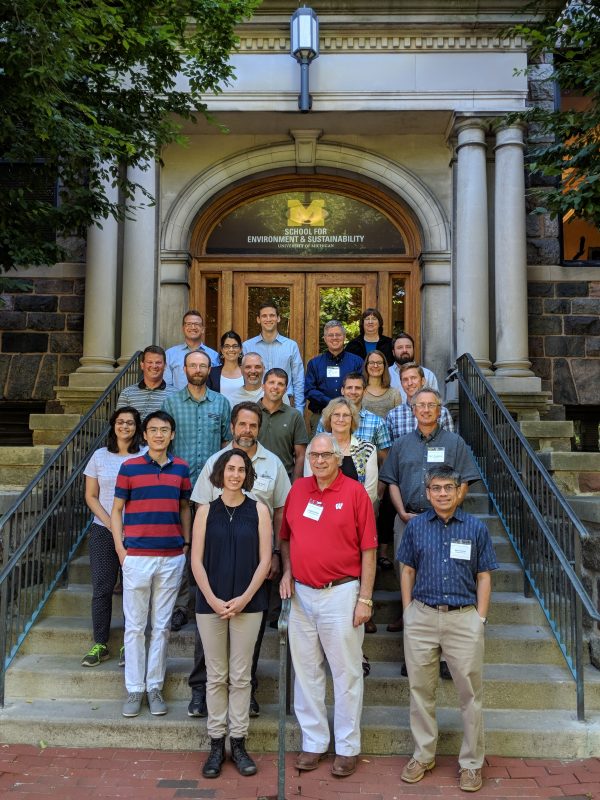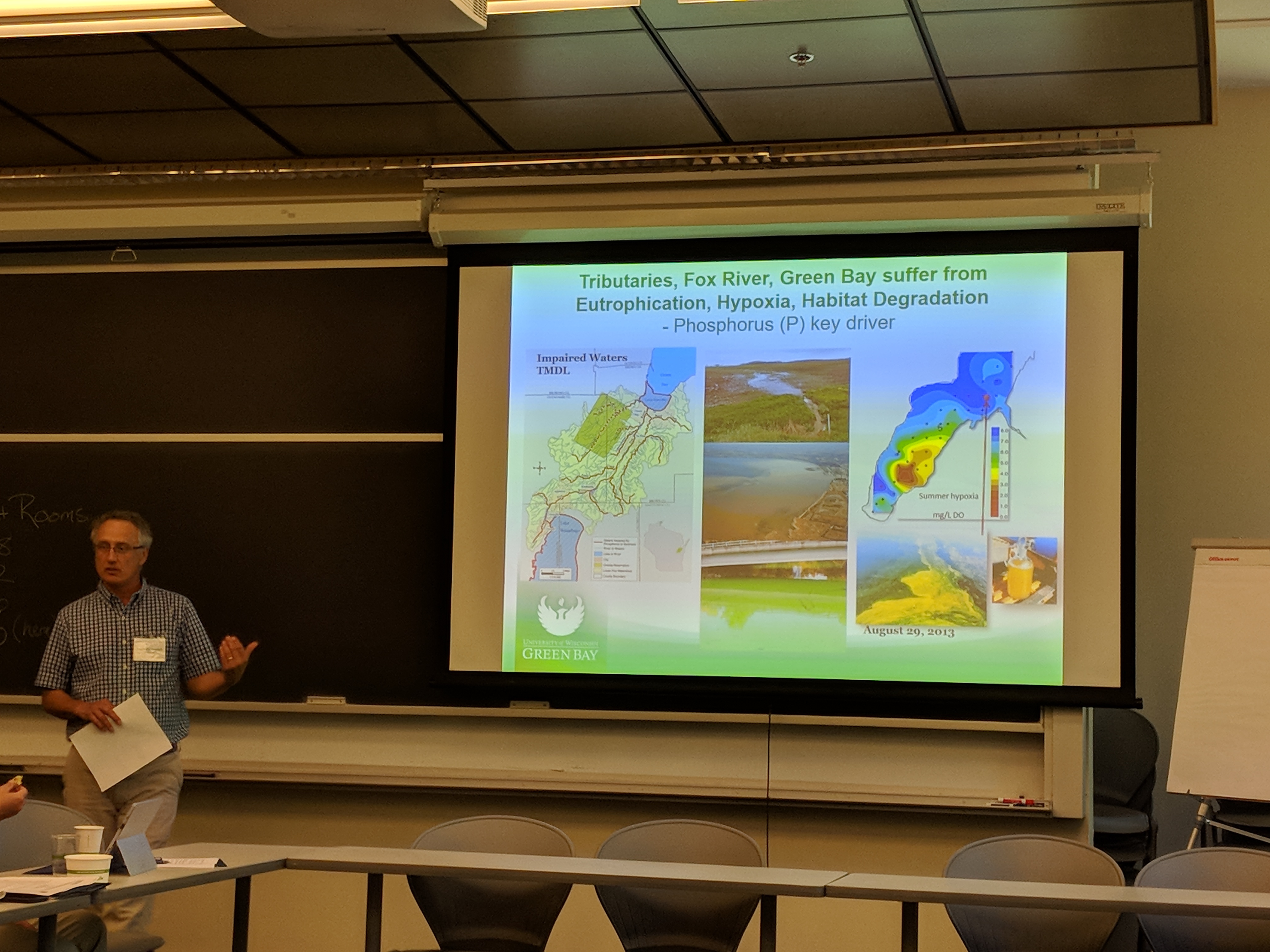Improving Models of Nutrient Loading and Harmful Algal Blooms though a Watershed-scale Approach that Emphasizes Soil Health and Upland Farming Practices
Dates: July 16-18, 2018
Leads: Tom Zimnicki, Michigan Environmental Council; Robyn Wilson, Ohio State University; Craig Stow, NOAA-GLERL; Mark Rowe, UM-CIGLR
GLERL Research Program: Integrated Physical and Ecological Modeling and Forecasting
Goals: The focus of this summit is to improve predictive models for harmful algae blooms (HABs) in Lakes Erie and Huron (Saginaw Bay). We will focus on watershed-level approaches that:
• Maximize use of emerging and already available Big Data (field-scale) within agriculture and
• Incorporate a range of soil-health measures and adoption of soil-health best management practices (BMPs) at-scale.
Participating stakeholders and experts will collaborate to address the following specific goals:
• Assess and summarize the current state of science of HAB modeling including predictive capacity;
• Identify gaps in research and knowledge that need to be filled to improve these models with specific respect to the upland watershed scale, and soils data;
• Develop (or at least outline/plan) an improved wastershed-scale model for predicting HABs that fully accounts for upland soil health factors by leveraging field-scale information.
• Consider policy solutions and other priorities for hastening application of soil health management BMPs.
Agenda: Click here to download
Products: Coming out of our three-day workshop, we expect to produce a short white paper or compilation of research—with a publicly accessible executive summary—that will capture:
• Our current ability to link field-scale data soil health metrics with predicting nutrient loading and HABs in the Great Lakes;
• The gaps in current research that limit at-scale, watershed-level modeling efforts;
• A draft working model for predicting HABs that incorporates variables related to upland soil health and adoption of soil amendment practices at the watershed level; and
• Recommended policy approaches for addressing agricultural practices in vulnerable watersheds, based on soil health strategies that are informed by better predictive models.
In the final of those sections, we will specifically consider: assessments of current conservation strategies to reduce HABs on Lake Erie and Lake Huron (Saginaw Bay); opportunities for partnerships with municipal soil waste and organic material diversion operations (for compost); and prospective manure management guidelines.
MEC Summit Participants
- Ryan Anderson, Delta Institute
- Jeremiah Asher, Michigan State University
- Jennifer Blesh, University of Michigan
- Tim Boring, Michigan Agri-Business Association
- John Bratton, LimnoTech
- Rem Confesor, Heidelberg University
- Libby Dayton, Ohio State University
- Matthew Dornbush, UW-Green Bay
- Grey Evenson, Ohio State University
- Kevin Fermanich, UW-Green Bay
- Brad Garmon, Michigan Environmental Council
- Zachary Hayden, Michigan State University
- Laura Johnson, Heidelberg University
- Margaret Kalcic, Ohio State University
- Douglas Karlen, USDA – Agricultural Research Service
- Shamitha Keerhi, The Nature Conservancy
- Luis Leon, Environment and Climate Change Canada
- Mark Rowe, University of Michigan – CIGLR
- Ryan Smith, Delta Institute
- Craig Stow, NOAA GLERL
- Janice Thies, Cornell University
- Robyn Wilson, Ohio State University
- Yao Zhang, Colorado State University
- Tom Zimnicki, Michigan Environmental Council







































